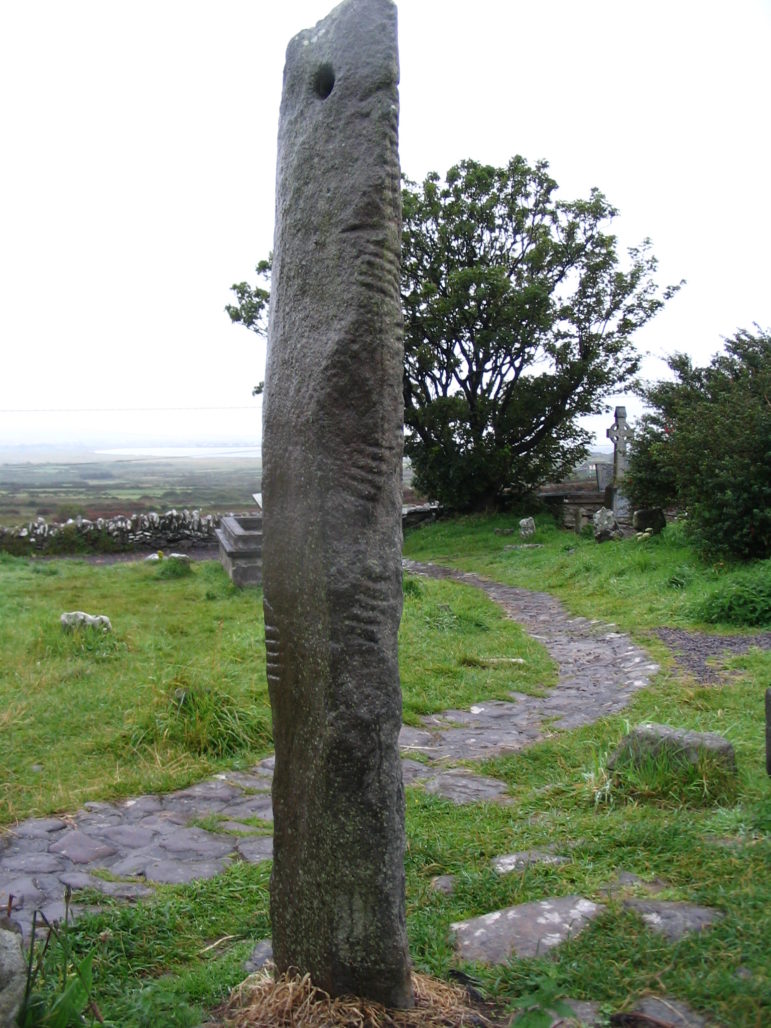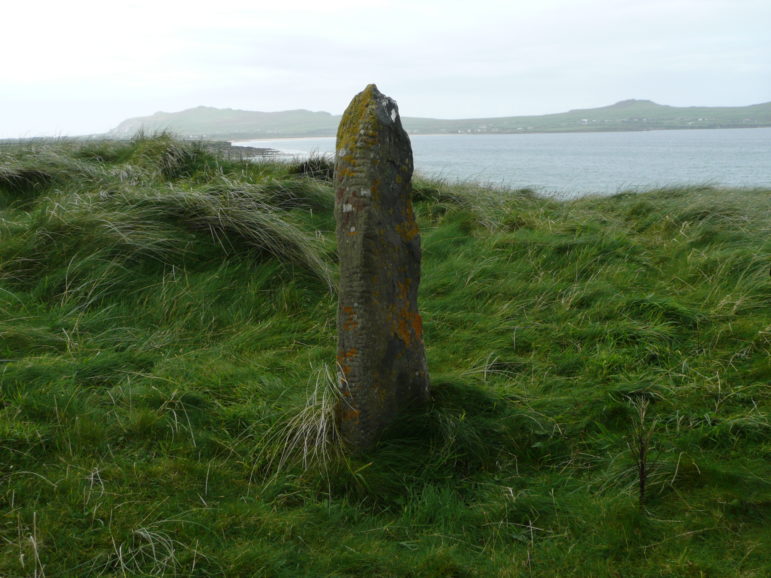DUBLIN, Ireland – Academics in Ireland and Scotland are looking at new technologies in an attempt to protect the ancient writing system of Ogham. It’s well known that the Celtic tribes did not write anything down, preferring to rely on memory, but they did have a form of script: Ogham (pronounced O-am) for certain inscriptions, for example, those found on graves.
Ogham is an alphabet, found mainly on stones throughout the ancient Celtic world. It is said in legend to have been devised by Ogma, the god of writing, but researchers are not sure when its use begins. Julius Caesar mentions the Gauls using Ogham, but there are no samples of it in France. The script may have been derived from the runes or from Greek writing, as there were connections between ancient Greece and the Celtic world, and the Greek word for writing is ‘ogmos.’

Kilmalkedar Ogham Stone – Image credit: Patrice78500 – Public Domain
The Ogham alphabet is rather more opaque than the Runic, and there are fewer inscriptions. Within the Celtic world, it is found primarily in Ireland and Scotland, with a few inscriptions in Wales and some in SW England. There are a number of inscriptions in Dartmoor, for example. It is first found around 400 CE, with most inscriptions dating from 500-600 CE.
However, the inscriptions that have lasted are of stone – mainly found on standing stones, in fact – and it is entirely possible that there are earlier inscriptions on wood, which have perished. It may have been developed as a secret language, available to the Irish, but not to those who read Latin.
Most inscriptions relate to personal names. It seems to have been less widely used than the Runes, in terms of the content of inscriptions.
The script also appears in a small number of 9th-century manuscripts. Most inscriptions, however, as noted, are not manuscript based and only a few are in museums: most remain out in the wild, in their original locations, often remote mountain side and moorland. This makes logging and recording these inscriptions quite difficult.
Maynooth University and the University of Glasgow are therefore planning to create a digital database of every example of 640 Ogham scripts dating from before the 1850s. They aim to make 3D models of all inscriptions, making them much more widely available to the public via their website and also providing a record against which the effects of future weathering can be evaluated.
The project says that the “ultimate aim of the Ogham in 3D project is to digitise and record in 3d as many as possible of the approximately four hundred surviving Ogham stones and to make the resulting 3D models freely available on this website as part of a multi-disciplinary digital corpus of Ogham stones.
The Ogham in 3D pilot project is supported by an expert Advisory Panel including Professor Werner Nahm (Director of the School of Theoretical Physics at DIAS), Professor Fergus Kelly (School of Celtic Studies at DIAS), Damian McManus (Professor of Early Irish at Trinity College Dublin and author of A Guide to Ogam) and Fionnbarr Moore (Senior Archaeologist at the National Monuments Service, responsible for the recording and preservation of Ogham stones).”
Katherine Forsyth, Professor of Celtic Studies at the University of Glasgow, says that “We hope this project will help … bring Ogham to the wider attention it deserves. Everyone’s heard of runes, but not so many people are familiar with Ogham, a highly unusual and amazingly clever writing system unique to these islands.”
Professor of Old Irish at Maynooth, David Stifter, says that “The collaboration of a diverse and international team of epigraphers, archaeologists, linguists and philologists allows us to ask research questions that will contribute to a holistic picture of the history of the Ogham script. We hope to get a better understanding of its meaning as a cultural expression of Gaelic intellectual history way beyond the narrow group of Irish ‘orthodox inscriptions’.”

Ogham Stone near Traigh an Fhiona – Image credit: Anne Patterson, CC BY-SA 2.0
If you’re into tattoos, you might want to keep an eye on Professor Forsyth’s project, as she is intending to use the digitisation process as an inspiration for other creative projects, including producing an Ogham Tattoo Handbook for Baden Press’ Think Before You Ink series.
If you’re wondering about the connection between the Ogham and the Tree Alphabet that appears throughout so much of contemporary Druidry, this is not very old. The connection between this early alphabet and the trees is solidified by Robert Graves in his book The White Goddess.
Technically, the script itself is called the Ogham, whereas the letters are known as the Beth-Luis-Nion (Birch-Rowan- Ash). Each of the 20 symbols is connected to a particular tree and there are several different systems.
Graves took much of his research from the Ogham scholar RAS Macalister (1870 -1950). It is, unfortunately, somewhat unlikely that the system was, as Graves claimed, an early tree calendar, but the idea has been taken up by modern paganism.
On its website, the Ogham 3D project pays tribute to Macalister, citing his Corpus Inscriptionum Insularum Celticarum (1945) as providing a valuable record of Ogham inscriptions. The new project will be using his own numbering system for example. They also mention other initiatives, such as the Celtic Inscribed Stones Project.
You can learn more about the details of the Ogham 3D project by visiting their website.
The Wild Hunt is not responsible for links to external content.
To join a conversation on this post:
Visit our The Wild Hunt subreddit! Point your favorite browser to https://www.reddit.com/r/The_Wild_Hunt_News/, then click “JOIN”. Make sure to click the bell, too, to be notified of new articles posted to our subreddit.